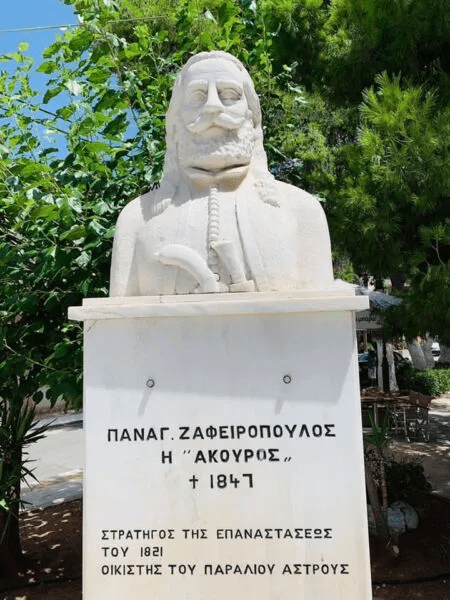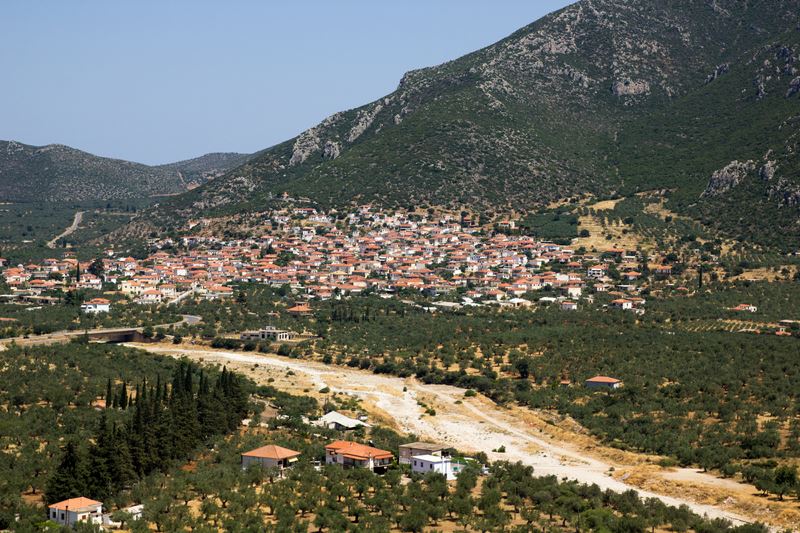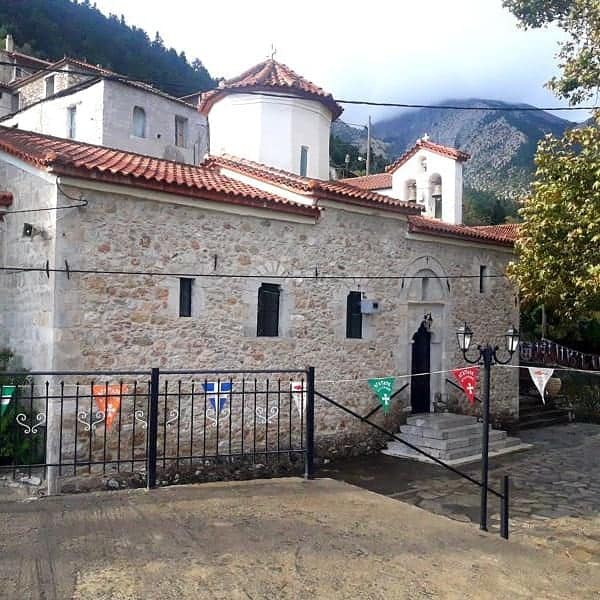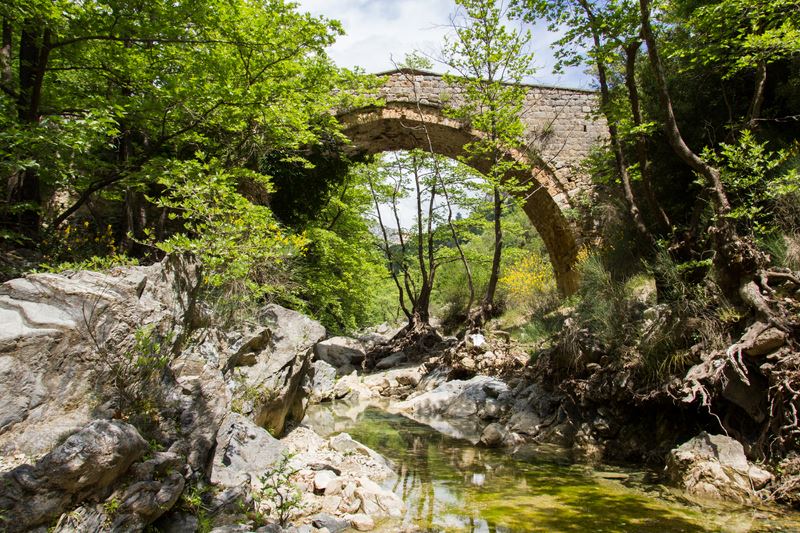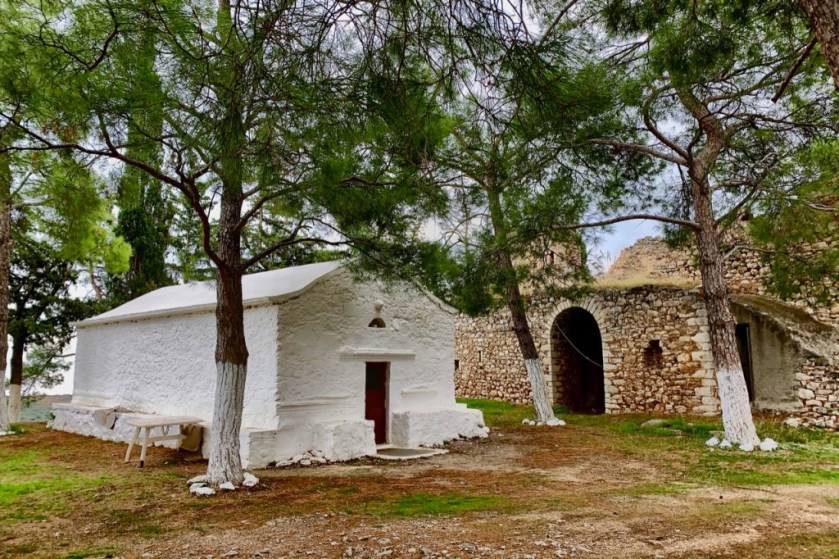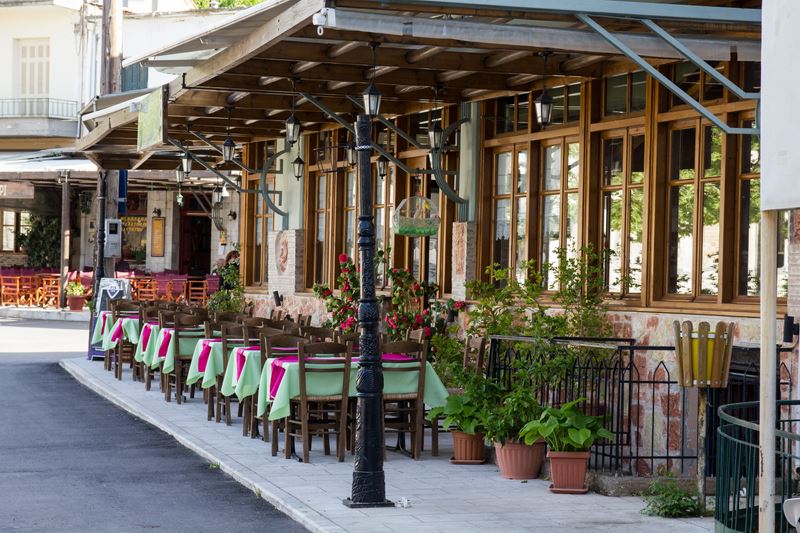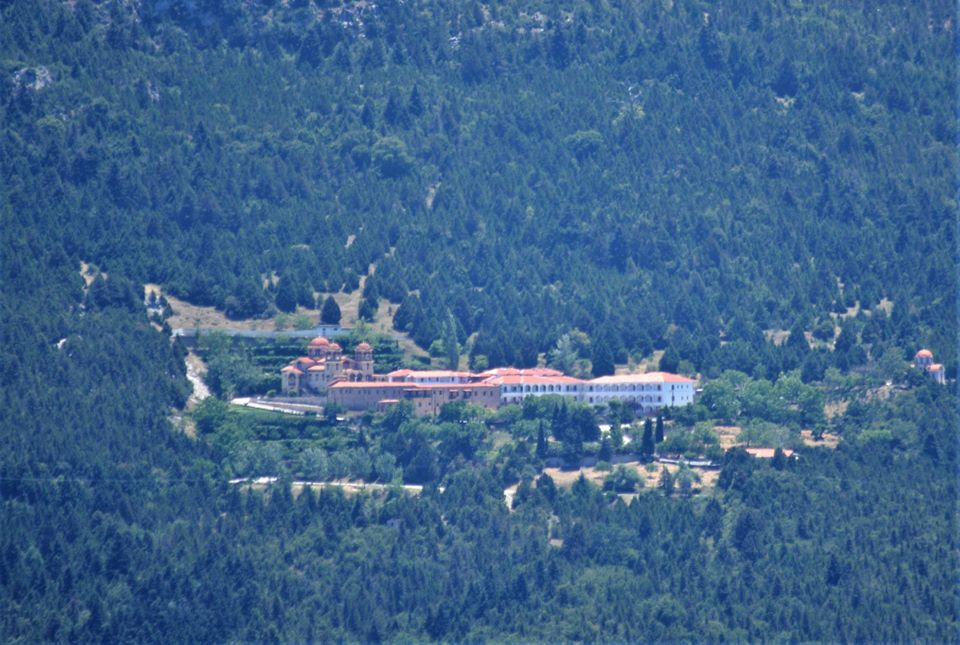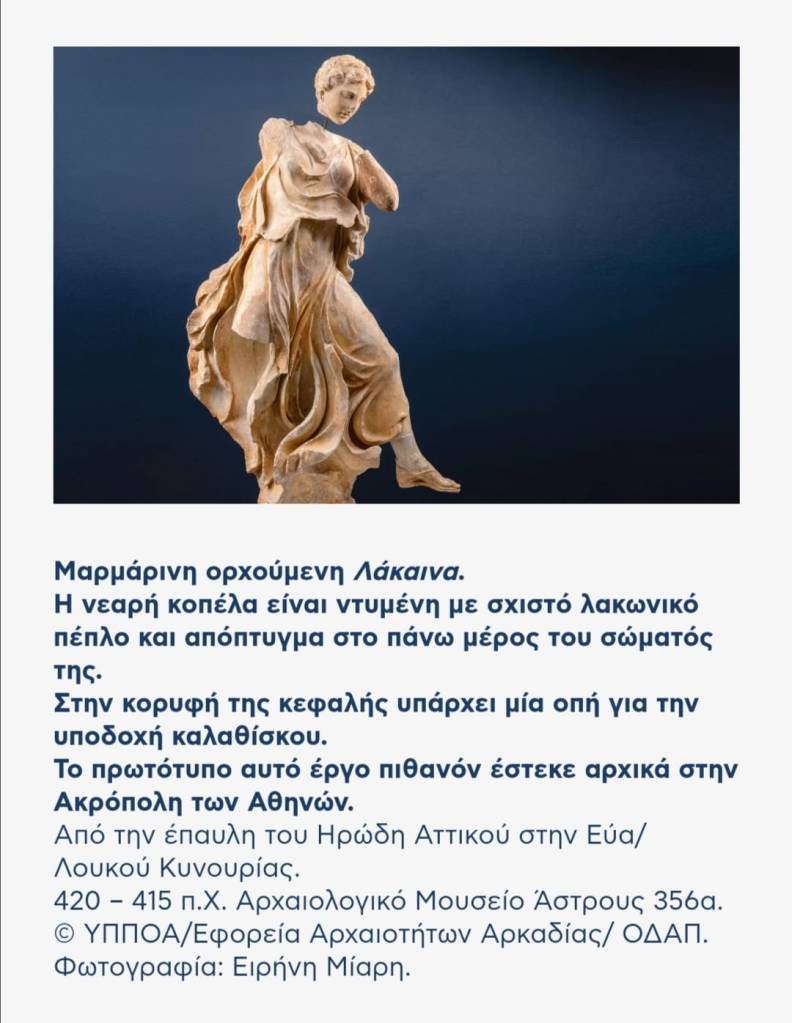
From “Castiello la Estella” (Castle of Astros) (1256), in Agianni of Astros, a part of the site “Xerokambi” can be seen in the background, “around the aegialon of Astros in the camp of Malevi”. (Adronikos II Paleologos). The photo from our friend and neighbor in the old “metropolis of Agiannis Soulinari” Thodoros Maglis.
The reference is official, of the Byzantine Emperor Hadronikos II Palaiologos (1259-1332 AD), he was the Byzantine Emperor (1282-1328), but the main thing is clear about the location, “around the aegialon of Astros in the camp of Malevi”, in “Xerokambi” of Agiannis Astros. (Adronikos II Palaiologos Chrysovulos (4) 1320 p.114), The mentioned land is Xerokambi, in the plain of the neighboring monastery of Malevi, in Agianni of Astros below the castle Estella (=Astros). Apart from the specific location “around the aegialon of the Astros in the camp of Malevi” he then refers to the interior of the mountainous Kynouria “around the place called Saint Nicholas…. the invoked bubble” and does not leave room for interpretations for another location. Some scholars strangely cut “in the camp of the Malevi” which most accurately describes the location and simply refer to the wider area “around the aegialon of the Astros” or incorrectly report a different location, because they do not know the location of the neighboring Malevi monastery ….

Holy Monastery of Malevi, is located in the east in Xerokambi of Agiannis, “in the plain of Malevi”, between Agiannis of Astros and Agios Petros.
It appears from the following official report of Hadronikos II Paleologus, in 1320 Agiannis was called Astros and also this report confirms the report of 1256 of the Chronicle of Moreos about the castle Estella (=Astros), which was located very close above Xerokambi, the “declared land of six hundred modius. they were, about the aegialon of the Astros in the camp of the Malevi”.
Below is the detailed account of the Byzantine Emperor Andronikos II Paleologus also by Nikos Vei.
He concedes to the monastery of Odegetria of Vrontochi in Mystra and to the abbot Pachomios various places among them “about the aegialon of Astros in the plain of Malevi about the holodomiko” and about the place called Saint Nicholas, about six hundred (5) (land)’ in the esti monydrio in the name of the venerated saint of Nicholas and enthroned fuska” Andronikos II Palaiologos in 1320 (Nikos Veis, Mneiai of Astros, p. 94).
: “… as well as the part of the above-mentioned land of six hundred modios. they were, the one about the aegialon of Astros, the one about the camp of the Malevi, the one about the cholodomitiko, and the one about the place called Saint Nicholas, .. and the said monydrio of Saint Nicholas also owns the said monydrio of Saint Nicholas, the invoked bubble after the exiles residents of this and others of these rights”. (Adronikos II Paleologos, Chrysovoulos (4) 1320 p.114).
The Byzantine Emperor confirms the name of the area is Astros (Agiannis), under the neighboring castle “Castiello la Estella” (Castle of Astros), which took the name Estella from Astros (as Agiannis was then called).
William Villardouinos built in Agios Ioannis (Agiannis) Kynourias, at the location “Xerokambi” (2 km) on a steep hill like a “natural pyramid”, “the castle, called “Castiello la Estella” (Castle of the Astros) (1256) ), for easier subjugation of the Tsakones neighbors in Sitaina, Kastanitsa and Prastos, where the Tsakones were, “up in the mountains” suso en law montanyas, as stated in the Chronicle of Moreos.
“And Astros was indeed two-sided even during medieval times… Agios Ioannis first had a status as a summer residence of Astrinoi called (above) Astros and Agiannis Astros, and later it became an independent village, when after the Alosin of Vasilevousis… And exactly on a single mountain above Agios Ioannis (=Epano Astros) lies … the Castle of Orias … In my opinion, after the above explanations, we can probably identify the Castle of Orias of Parnonos with Estella = Astros.(( Nikos A. Vei , Meniai of Astros 99-100).

“Central tower of Astros” (Castle Estella on Agiannis) By, Anastasios I. Ballas, Peloponnesian, Volume KG of the Society of Peloponnesian Studies, Prize of the Academy of Athens Astros (p. 209-210 Castle of Astros)
Leake 500 years later confirms the reference of 1320 by Hadronikos II Paleologus “the plain of Astros”, which is the Xerokambi of Agiannis.
“This road departs to the left of the Greek fortress (Castle Estella=Astros) which I saw from the plain of Astros, (i.e. from Xerokambi) which is two miles above the Ayiannite Kalyvia, then enters the cultivated plain of Xerokambi near Agiannis (Leake Travels in Morea, p. 492)

Everyone agrees and the Byzantine Emperor Andronikos II Paleologos the “Castiello la Estella” (Castle of Astros) (1256), is located in Agianni of Astros, in the location “Xerokambi”, above the “Astros in the camp of Malevi” In 1256 Guilielmos Villardouinos built in Agios Ioannis (Agianni) Kynourias at the location “Xerokambi” (2 km) on a steep hill like a “natural pyramid” “the castle, opera is called”… “Castiello la Estella” (Castle of Astros ) (1256) ), “to more easily subjugate the neighbors of the Tsakones in Sitaina, Kastanitsa and Prastos, where the Tsakones were, “up in the mountains” suso en law montanyas, as stated in the Chronicle of Moreos. (The photo from our friend and neighbor in the old “metropolis of Agiannis Soulinari” Thodoros Maglis)
Sources
Θυρεάτις Γη : Δήμος Θυρέας, Άστρος και Παράλιο Άστρος – astrosgr.com
- 1) Το 2ο μ.χ. αιώνα ,πρώτη αναφορά του Πτολεμαίου για το πόλισμα «Άστρον», που είναι το σημερινό Άστρος. – astrosgr.com
- 2) Το 1256 ,«Castiello la Estella» (Kάστρο του Άστρους) (1256) στον Αγιάννη του Άστρους . – astrosgr.com
- 3)Το 1293 , η πρώτη επίσημη αναφορά της πόλης με το όνομα «Άστρος», του Ανδρόνικου Β’ Παλαιολόγου – astrosgr.com
- 4) Το 1320 «περί τον αιγιαλόν του άστρου εις τον κάμπον της μαλεβής», στο «Ξεροκάμπι» του Αγιάννη του Άστρους, κάτω από το κάστρο Εστέλλα (=Άστρος) – astrosgr.com
- 5) Το 1435 ο Γεώργιος Φραντζής αναφέρει το Άστρον (το σημερινό Άστρος) και τον Άγιον Ιωάννη (Αγιάννης του Άστρους). – astrosgr.com
- 6) Το 1516, Toast(r)ι (=Toasti) , Toastri και Astro είναι το ιστορικόν Άστρος Κυνουρίας . – astrosgr.com
- 7) Από το 1756 ,ο Δημήτριος Καρυτσιώτης θυμότανε από την Καρύτσα του Αγιάννη «την πατρίδα μας (χωρίον μας) … του Άστρους (Astro)» και πριν το 1821 ο Άκουρος – astrosgr.com
- 8) To 1823 Αλέξανδρος Μαυροκορδάτος, «η Εθνοσυνέλευση της απελευθερωμένης Ελλάδας συνήλθε στο Άστρος». – astrosgr.com
- 9-1) Αναφορές για το ιστορικόν Άστρος Κυνουρίας πριν το 1823 – astrosgr.com
- 9-2) Δήμος Θυρέας (1835-1912) – astrosgr.com
- 9-3)Δήμος Θυρέας (1835-1912), ΦΕΚ και «τα συνιστώντα το δήμον χωρία» – astrosgr.com
10) Οι Αστρεινοί και οι Αγιαννίτες , κάτοικοι του Άστρους για χιλιάδες χρόνια. – astrosgr.com

The Estella castle in Agiannis stands out like a distant star “up in the mountains” suso en law montanyas, as mentioned in the Chronicle of Moreos. Straight ahead in the distance is Argolikos and in the center on the small hill is the “island” which is the Paralio Astros Castle.




